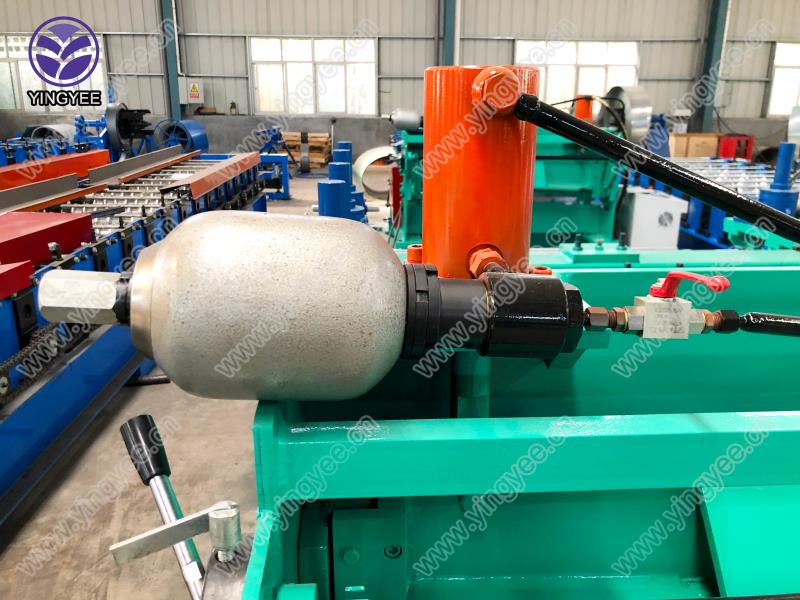
The Evolution of Half Fenders Cold Bending Machines
In the world of manufacturing and structural engineering, the importance of precision tools cannot be overstated. Among these tools, half fenders cold bending machines have emerged as indispensable equipment in the production of fenders used in various industries such as construction, shipbuilding, and automotive. In this article, we will explore the significance of these machines, their working principle, the materials they work with, and their applications.
Understanding Half Fenders
Before delving into the specifics of cold bending machines, it's crucial to understand what half fenders are. Half fenders, typically made from materials such as steel or high-density polyethylene, are protective barriers installed on the sides of vessels and structures. They are designed to absorb impacts during docking or loading processes, thereby preventing damage to the hull of ships or the sides of quays.
Given their function, half fenders are subjected to significant stresses; therefore, their construction must adhere to strict standards of durability and performance. This is where the precision of a cold bending machine becomes vital.
Cold Bending Technology
Cold bending is a manufacturing process that involves deforming materials like metals at room temperature. This method prevents the need for additional processes such as heating, which can unnecessarily alter the metal’s properties. Cold bending machines utilize hydraulic systems or mechanical means to apply force to metal sheets, resulting in the desired curvature without compromising structural integrity.
The cold bending process offers several advantages, including reduced material waste, enhanced precision, and improved surface finish. As a result, components produced using cold bending machines often exhibit superior quality compared to those made through traditional methods, which may involve heating and welding.
Working Principle of Half Fenders Cold Bending Machines
Half fenders cold bending machines typically consist of several critical components the bending mechanism, material feed system, and a control panel. The heart of the operation lies in the bending mechanism, which is often hydraulic. This system allows for the application of precise amounts of pressure to achieve accurate bends.
1. Material Feeding The process begins with feeding the raw material, usually in the form of flat metal sheets or rolls, into the machine. Advanced machines may have automated feeding systems to streamline the operation.

2. Bending Process Once the material is in place, the machine applies pressure through hydraulic cylinders or mechanical arms. The curvature angle and radius can be precisely controlled via a digital display on the control panel, allowing for a customizable end product.
3. Quality Control Post-bending, manufacturers often conduct comprehensive checks to ensure the dimensions and physical properties of the half fenders meet industry standards. This may involve using gauges and other measuring instruments to confirm the accuracy of bends.
Applications of Cold Bended Half Fenders
The application of half fenders is broad, extending across various sectors. In the marine industry, these fenders protect vessels and ports during berthing operations, minimizing the risk of costly damage. In construction, half fenders can be strategically installed to enhance the safety and integrity of structures, acting as a cushion during the impact of heavy equipment.
In the automotive industry, cold-bent half fenders are increasingly used in the production of vehicles to improve aerodynamics and safety. The lightweight yet durable nature of cold-bent components makes them ideal for modern vehicle design, where efficiency and performance are paramount.
The Future of Cold Bending Machines
With the advancements in technology, the future looks promising for cold bending machines. Automation and smart technology integration are trends that are likely to revolutionize how these machines operate. Predictive maintenance and AI-driven performance monitoring systems can enhance efficiency and reduce downtime.
As industries continue to seek sustainable and cost-effective solutions, cold bending technology for producing half fenders is poised to play a significant role in meeting these challenges. As a result, manufacturers must stay updated with the latest advancements to maintain a competitive edge.
Conclusion
In conclusion, half fenders cold bending machines represent a crucial component in the production of high-quality, durable fender systems. With their ability to produce precise bends without compromising material integrity, they have become vital tools in various industries. As technology continues to evolve, the capabilities of these machines will only expand, further solidifying their place in modern manufacturing. Embracing these advancements will enable businesses to deliver superior products while meeting the ever-increasing demands for quality and efficiency.